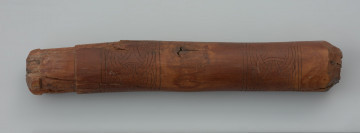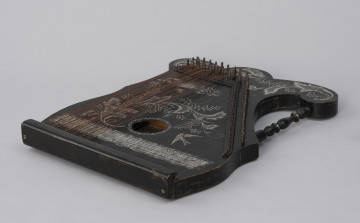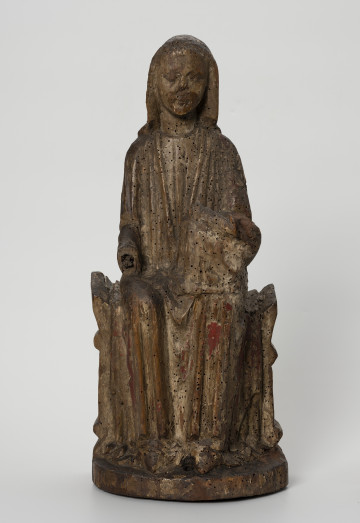
Knife with handle
900 — 1100
National Museum in Szczecin
Part of the collection: Middle Ages
The reliquary of St Cordula is an oval-shaped casket, the bottom and body of which are made of oak wood, and whose walls and lid are covered with 22 panels cut from elk antlers. Each of the panels is decorated with motifs of twisted beasts, as well as elaborate floral ornamentation, which are characteristic of the Scandinavian decorative style known as Mammen, used from the mid-10th to mid-11th centuries. The tiles are connected by gilded copper tapes, finished with stylised dragon heads. The bottom stands on six profiled bronze feet.
It has not yet been clearly determined how the casket ended up in Kamień and the cathedral treasury. One of the hypotheses assumes its connection with a war expedition of the Pomeranian Duke Racibor I on the Norwegian town of Kungahelli in 1135 – it could have been a war booty, which was later donated to the church. According to another opinion it could have been a gift of Bishop Otto of Bamberg, the Apostle of Pomerania, who had two such caskets – one was to be given to the church in Kamień Pomorski and the other to the church in Kiel. Another theory assumes that the casket was made locally, in the workshop of Scandinavians who settled in Pomerania. Written sources have it that in the 15th century it was used to hold the skull and bones of St Cordula, one of the companions of the Romano-British princess Ursula, who set out on a sea journey to meet her future husband, the prince of Brittany. Due to a coincidence, Ursula’s retinue found themselves in one of the forts on the Rhine. The princess and all the women were murdered by the Huns, the only survivor being Cordula, who, tormented by remorse, turned herself in the day after the massacre. Her skull – already a holy relic – supposedly ended up in Kamień.
During the war the reliquary was kept in the treasury of the local church. In 1942, the decision was made to move the most precious objects to a safer place – the property of the administrator of the Kamień Cathedral, Hasso von Flemming in Benice. In March 1945, with the front line approaching the town, the chests with the valuables were loaded on the carts, which then headed for the crossing to Wolin Island. However, in the vicinity of Troszyn the convoy encountered a tank battalion and faced gunfire. In the general chaos that ensued at the time, the cart with the chest containing the reliquary was lost.
Ewa Górkiewicz-Bucka
Author / creator
Object type
reliquary, casket
Technique
soldering, cutting, forging, curving (engraving)
Material
wood, bronze, copper, antlers
Origin / acquisition method
acquisition
Creation time / dating
Creation / finding place
Owner
Muzeum Narodowe w Szczecinie
Identification number
Location / status

900 — 1100
National Museum in Szczecin

1901 — 1945
National Museum in Szczecin

circa 1260
National Museum in Szczecin
DISCOVER this TOPIC
Museum of King Jan III's Palace at Wilanów
DISCOVER this PATH
Educational path